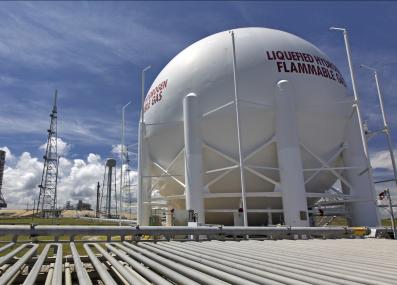Have a question?
How can burning one ton of fuel create more than one ton of CO2?
Coal, oil and gas provide the carbon in our CO2 emissions, but the heavier oxygen comes from the air.
February 9, 2023
Burning fossil fuels such as coal, natural gas, and oil creates a troubling amount of carbon dioxide (CO2). For example, says Yogesh Surendranath, Paul M Cook Career Development Associate Professor of Chemistry at MIT, burning a commonly used kind of coal called anthracite emits around 2.6 tons of CO2 for every ton of coal. But how can this be? If atoms are not magically created or destroyed, how can burning a ton of fuel create more than a ton of CO2?
The answer is deceptively simple, Surendranath explains. Carbon dioxide is made of one carbon atom and two oxygen atoms. The carbon comes from the coal, but the oxygen comes from the air around it; during combustion, they react to create CO2. That oxygen’s extra mass is what allows one ton of fuel to produce more than a ton of CO2.
Exactly how much CO2 a fuel emits depends on its molecular structure. Suppose, Surendranath says, that you could burn a perfect lump of coal made of 100 percent carbon. Each of its carbon atoms has an atomic weight of approximately 12, owing to its six protons and six neutrons. When the carbon combines with two oxygen atoms, each with an atomic weight of 16, a CO2 molecule with a weight of 44 is created. The math tells you that for every ton of pure carbon burned, about 3.66 tons of CO2 is created.
In practice, though, coal is not that pure. “When you dig coal out of the ground,” Surendranath says, “the mass of that coal is not all carbon. It's got other stuff in it. It's got some minerals that aren't going to burn. It's got some nitrogens. It's got some oxygens already that are adding to the weight.” For this reason, 3.66 is just the theoretical maximum ratio. Coke, the closest to pure carbon of any version of coal used on a large scale, actually creates around 3.2 tons of CO2 per ton of fuel.
A similar story is true for other fossil fuels. Natural gas is mostly methane, which is made of one carbon atom and four hydrogen atoms. When it burns, its carbon bonds to oxygen to form CO2 while its hydrogen atoms grab onto oxygen to make H2O—water. This knocks methane’s ratio down to about 2.75, Surendranath says. Gasoline is a bit less than 90 percent carbon by weight, and its ratio is around 3.2. That is why driving our cars can emit several tons of CO2 per year even though most of us don’t burn several tons of gasoline.1
“The short story of all of this really,” says Surendranath, “is that part of the mass in the resulting CO2 comes from the oxygens—from the O2—and those atoms are adding to the weight.”
Thank you to several readers for sending in related questions, including Chris Miller of Corbett, Oregon, Stephen Sikora of Newtown, Pennsylvania, and Ron Van Hemert of Jeffreys Bay, South Africa. You can submit your own question to Ask MIT Climate here.
1 U.S. Environmental Protection Agency: Greenhouse Gas Emissions from a Typical Passenger Vehicle.









